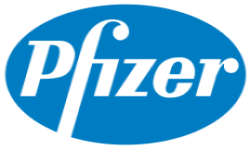The Saudi Arabia spinal surgery devices market size was valued at USD 6.86 Billion in 2022 and is expected to reach USD 8.57 Billion by 2031, expanding at a CAGR of 2.5% during the forecast period, 2023-2031. The growth of the market is attributed to improved healthcare infrastructure and education facilities.
Surgical devices and spinal implants are used to treat medical abnormalities and diseases. These devices are made from biodegradable materials such as titanium alloy, titanium, and stainless steel, and are typically offered in two varieties, namely fusion implants and non-fusion implants.

Fusion implants include rods, titanium alloy, plates, screws, and abutments cages. Non-fusion implants, on the other hand, includes artificial discs, inflatable rods, and growth-sparing devices. Moreover, thoracic, lumbar, and cervical fusion, as well as spinal decompression devices, are utilised for a variety of therapeutic methods.
Spinal devices are widely used in spinal surgeries to cure disfigurements, broken bones, and disc degradation. Cervical and thoracolumbar devices, vertebral body devices, artificial discs, dynamic stabilisation devices, annulus repair devices, and spinal cord compression fracture devices fall under the market’s product segment. The prevalence of neurodegenerative disorders and age-related spinal disfigurements is increasing the demand for spine devices.
Saudi Arabia Spinal Surgery Market Trends, Drivers, Restraints and Opportunities
- Improvements in spine surgical technology as well as an increasing prevalence of spinal diseases are estimated to fuel the market growth.
- Introduction of advanced bone grafting products and growing acceptance of minimally invasive spine procedures are anticipated to fuel the growth of the market.
- Increasing government expenditure on spine treatment is expected to fuel the market growth.
- The COVID-19 pandemic hampered the market growth owing to reservation of beds in hospitals for the inflicted patients. However, the market is anticipated to recover soon.
- Growing incidence of spinal disorders such as scoliosis, degenerative disc disease, kyphosis, and spondylolisthesis is driving the market expansion.
- High cost of spinal surgery as well as reimbursement concerns can restrain the market growth during the projected timeline.
- Emerging markets such as China, India, Brazil, and Mexico are likely to provide substantial growth opportunities for participants in the spinal implants and surgical devices market.
Scope of Saudi Arabia Spinal Surgery Market Report
The report on the Saudi Arabia spinal surgery market includes an assessment of the market, trends, segments, and regional markets. Overview and dynamics have also been included in the report.
|
Attributes
|
Details
|
|
Report Title
|
Saudi Arabia Spinal Surgery Market - Industry Analysis, Growth, Share, Size, Trends, and Forecast
|
|
Base Year
|
2022
|
|
Historic Data
|
2016–2021
|
|
Forecast Period
|
2023–2031
|
|
Segmentation
|
Device Types (Spinal Fusion [Cervical, Interbody, ThoracoLumbar, and Others], Spinal Decompression[Corpectomy, Laminotomy, Discectomy, and Others], Fracture Repair Devices, and Others)
|
|
Country
|
Saudi Arabia
|
|
Report Coverage
|
Company Share, Market Analysis and Size, Competitive Landscape, Growth Factors, and Trends, and Revenue Forecast
|
|
Key Players Covered in the Report
|
Styker Corporation; Zimmer Biomet; Johnson & Johnson; Medtronic PLC; and NuVasive, Inc.
|
Saudi Arabia Spinal Surgery Market Segment Insights
Device Types Segment Analysis
Based on device types, the market is divided into spinal fusion, spinal decompression, fracture repair devices, and others. The spinal fusion segment is categorized as as cervical, interbody, thoracolumbar, and others. The spinal decompression segment is further sub-segmented into corpectomy, laminotomy, discectomy, and others.
The spinal fusion segment is expected to grow at a rapid pace during the forecast period owing to the leading market participants introducing both anterior and posterior dynamic lumbar spine stabilisation devices.
However, the spinal decompression segment is anticipated to hold a key share of the market in the coming years. Various products in the market offer conventionally successful therapies for lumbar spinal stenosis sufferers, as well as sophisticated alternative treatments for decompression spine surgery.
The fracture repair devices segment is expected to grow at a healthy rate due to significant advancements in the minimally invasive surgery market. Moreover, rising osteoporosis prevalence, geriatric population, and technological developments are the key performance indicators of the market growth in the country.

Segments
The Saudi Arabia spinal surgery market has been segmented on the basis of
Device Types
- Spinal Fusion
- Cervical
- Interbody
- ThoracoLumbar
- Others
- Spinal Decompression
- Corpectomy
- Laminotomy
- Discectomy
- Others
- Fracture Repair Devices, and Others
Country
Key Players
Competitive Landscape
The key players competing in the Saudi Arabia spinal surgery market are Styker Corporation; Zimmer Biomet; Johnson & Johnson; Medtronic PLC; and NuVasive, Inc.
Companies are engaging in partnerships, acquisitions, and mergers to expand their market share. For instance, they’re entering into partnership with medical universities to improve the product line and leverage their market positon.

























